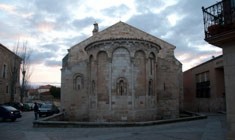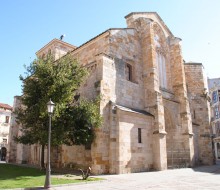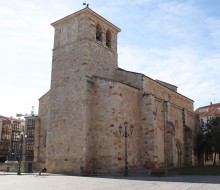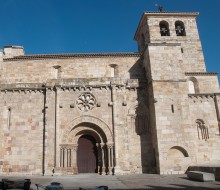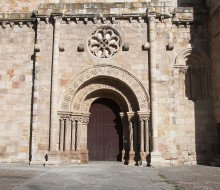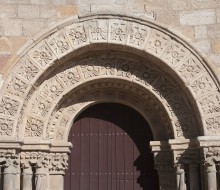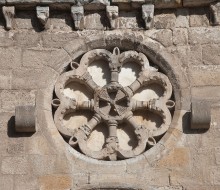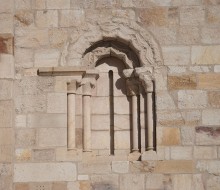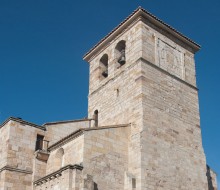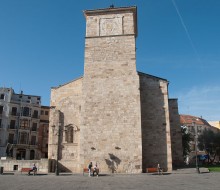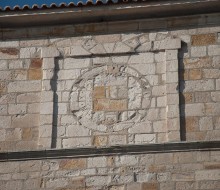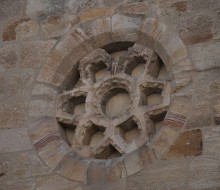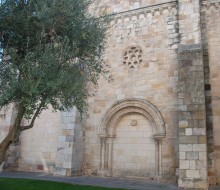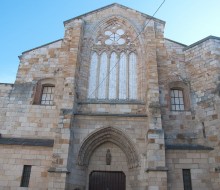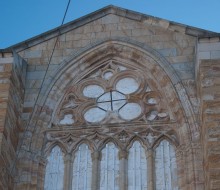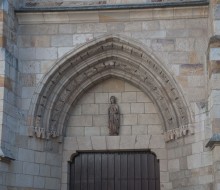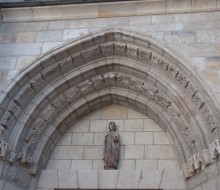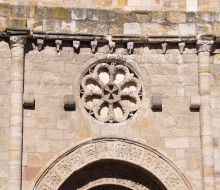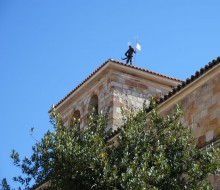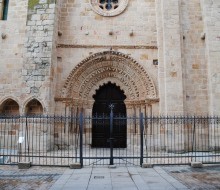Church of San Juan Bautista
Zamora
Church of San Juan Bautista
Zamora12th century
According to the oldest-found evidence, the temple dates from the mid-12th century. The construction continued during the 13th century and went on even until the 14th century though. Its popular name derives from its close location to the new gate of the ancient walls, which are now under the main square.
This temple stands out because on the southern doorway there is a wagon-wheel rose window which has become a characteristic symbol of the Romanesque of Zamora. This is the main doorway, and it is in perfect condition.
The tower is located on the main apse due to it complemented the wall that was beside it. What was the Main Chapel is now the current tower, which replaces the original one. The tower is solid and much lowed, and it is topped by the figure of Peromato, which is used as weather vane.
During the Gothic, the western doorway and a large window were added. Was in 1531 when Rodrigo Gil de Hontañón connected the inner part by two arches that go from the head part to the foot, but in 1559 the tower, which had been built in 1057, collapsed inwards destroying the arch and the apse of the Gospel, as well as the main chapel. In 1564, Diego Camarón gave it the current shape. He also included the collar roof “alfarje” (a kind of horizontal wooden ceiling). Later, in 1642, on the top of the tower was erected the weather vane-armour called Peronato, which nowadays is a reproduction of the original one, which houses the Museum of Zamora. On the tower was also the council clock from the Middle Ages until the 19th century.
Previously the floor plan had three naves and three square apses, but presently, after the reform it suffered during the 16th century, have only been preserved a nave with Mudejar wooden roof and three renovated chapels. Their capitals are decorated with plants and balls motifs.
The southern doorway is flanked by two attached slender columns and three semicircular archivolts with elegant ornament. The two outer, are decorated with open flowers and the interior one, has geometric shapes mixed with floral motifs, whose central buds are all different. These archivolts rest on the columns, some on which have twisted shafts, and are decorated with plant motifs.
At the top of the church there is a magnificent wagon-wheel-rose window, where the Maltese cross was sculpted. From its center, come up eight small columns as spokes, joined by simple arches. Between each of them there is a petal.
In the northern doorway, which was walled in, can be seen an opening with simple archivolts which is crowned by other rose window as a six petals flower, decorated with floral studs and above it can be seen the Lamb, the symbol of St. John the Baptist.
Inside, main altar can be highlighted. It dates from the 16th century and is dedicated to St. John the Baptist. There, are also housed two of the images of the famous Zamora Holy Week: “Jesús Nazareno” (Jesus of Nazareth) and the “Virgen de la Soledad” (Virgin of Solitude).
The doorways of this church deserved the title of National Historic Monuments since 1961.
Exterior de la Iglesia de San Juan
Destaca del exterior la portada sur, que es la portada principal y se encuentra en perfecto estado de conservación. Se encuentra flanqueada por dos esbeltas columnas adosadas y tres arquivoltas de medio punto que muestran una elegante decoración. La decoración de las columnas exteriores tienen flores abiertas y la interior formas geométricas mezcladas con motivos florales.
En la parte superior se encuentra un magnífico rosetón, de rueda de carro, con la cruz de Malta inscrita, de la que parten ocho columnillas, a modo de radios, unidas entre sí por sencillos arcos. Entre uno y otro hay un pétalo.
En la portada norte, hoy condenada, aparece un vano con arquivoltas lisas que es coronado por otro rosetón a modo de flor de seis pétalos con adornos de clavos floreados y sobre ella el Cordero, símbolo de San Juan Bautista.
Interior de la Iglesia de San Juan Bautista
En su interior, destaca el retablo principal, dedicado a San Juan Bautista y del siglo XVI. También se guardan dos de las imágenes de la famosa Semana Santa zamorana: el Jesús Nazareno y la Virgen de la Soledad.
GET DIRECTIONS
ROUTES
OPENING HOURS AND VISITS
From 1st October until 1st March:
Monday and from Wednesday to Sunday: from 10:00 to 14:00 and from 16:30 to 18:30.
Closed on Tuesday.
From 1st March until 30th September:
Monday and from Wednesday to Sunday: from 10:00 to 13:00 and from 17:00 to 20:00.
Closed on Tuesday.
GENERAL INTEREST SERVICES
Tourist offices:
- Local tourist office: It is located at 5, Arias Gonzalo Square. Tel. +34 980 533 694
- Castilla y León tourist office: It is located at 1, Príncipe de Asturias Avenue. Tel. +34 980 531 845
- Provincial tourist office: It is located at Viriato Square. Tel. +34 980 534 047
Local police: Tel. +34 980 531 245
Civil Guard (police with responsibilities outside towns): Tel. +34 980 521 100
Emergency telephone numbers: 112
- Virgen de la Concha (Hospital): Tel. +34 980 548 212
Bus station: Tel. +34 980 521 281
Train station: Tel. +34 980 521 110
Taxi: Tel. +34 630 630 630
Civil defence: Tel. +34 980 536 190
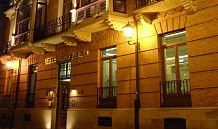
Hotel Horus
Zamora
El Hotel Horus, abierto en el año 2001, tiene un total de treinta y ocho habitaciones dobles que se dividen entre cuatro…
More info